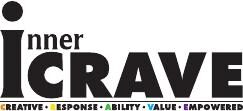
“The fact is that you can’t hit a target that you can’t see. If you don’t know where you’re going, you will probably end up somewhere else. You have to have goals.”
– Zig Ziglar
Most people understand that setting goals are important for making progress; however, the overwhelming majority of folks struggle with the goal-setting process, especially when it comes to improving their health and fitness.
According to psychologist and best-selling author of 59 Seconds: Change Your Life in Under a Minute Richard Wiseman, it’s critical to set goals that are S.M.A.R.T.:
- Specific
- Measurable
- Achievable
- Realistic
- Time-based
Instead of saying, “I want to lose weight,” how can you be more specific about the amount of weight you want to lose in a specified time? Even more importantly, focus on creating bite-sized goals for each day or week.
- Too often, we get wrapped up in setting big, long-term goals, and while those are important, what we really need to do is break them up into smaller, more manageable, bite-sized chunks.
- These are like milestones along the journey.

Re-source: Reenforce
In addition to outcome-based goals (e.g., losing a certain amount of weight) that specify what you want to happen during a period of time, create a list of behavior-based goals.
- Behaviors (as well as attitudes) are well within your control, and they specify actions that must be taken to get to the desired outcome.
You can essentially map out your desired outcome by creating step-by-step mini-goals (i.e., a list of behavior-based goals) that slowly but surely take you where you want to be. Here are some examples of behavior-based goals:
- I will get 7 – 8 hours of sleep each night.
- I will go grocery shopping on Sunday to make sure I have healthy foods.
- I will eat 1 – 2 servings of vegetables with each meal.
- I will eat a portion of protein with each meal.
- I will drink eight to twelve 8-ounce glasses of water each day.
- I will take a different route home so that I’m not tempted by ‘x’ fast-food restaurant.
By listing behavior-based goals, you emphasize the process, and you acknowledge that you are in the driver’s seat.
- Notice how the behaviors are specific, measurable, achievable, realistic, and time-based—in most cases, they are daily actions.
- Ask yourself, what’s one thing that I can do right now, today, to help me achieve the desired outcome?
craving and resource from “Change That Up” – changethatup.com

